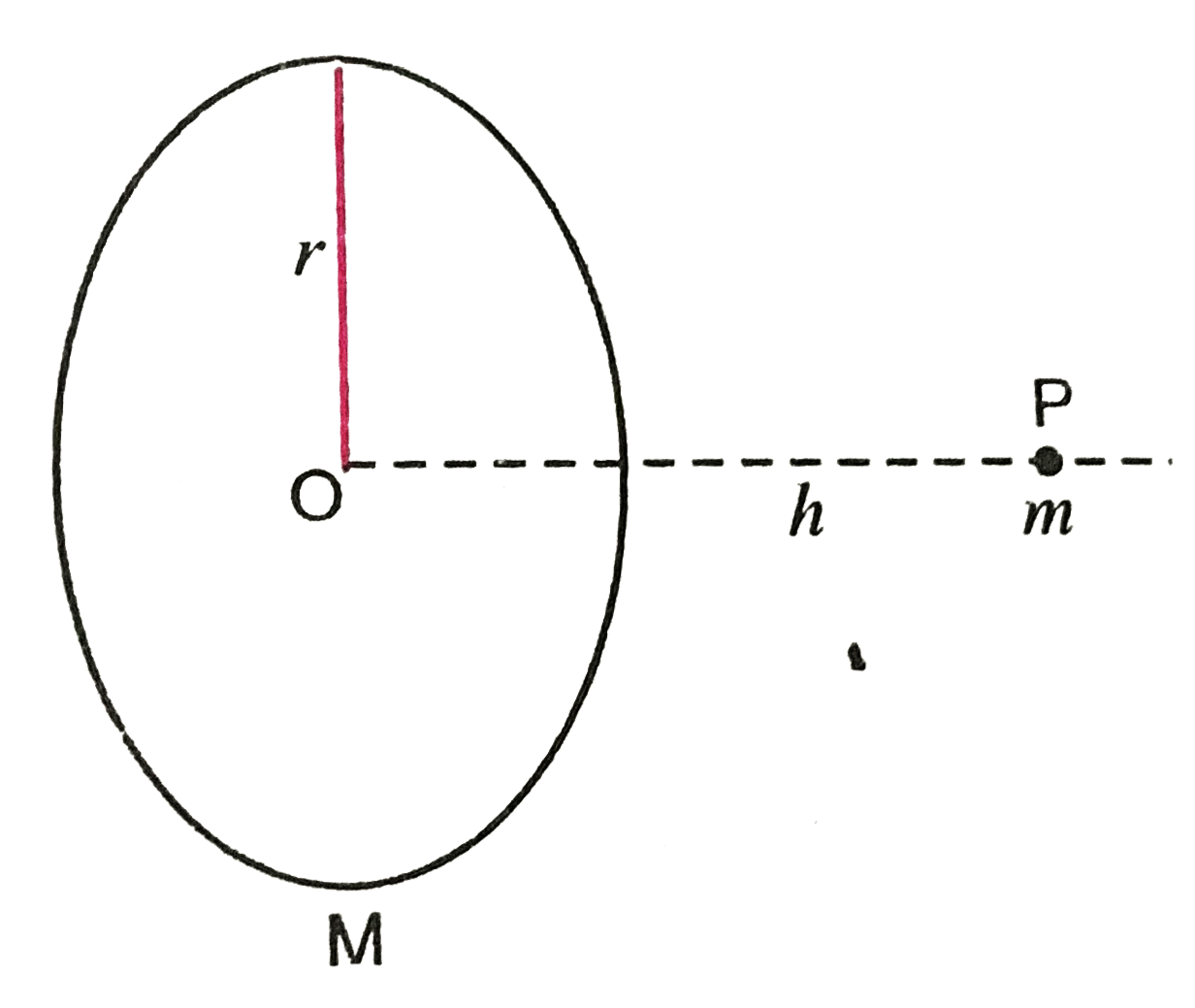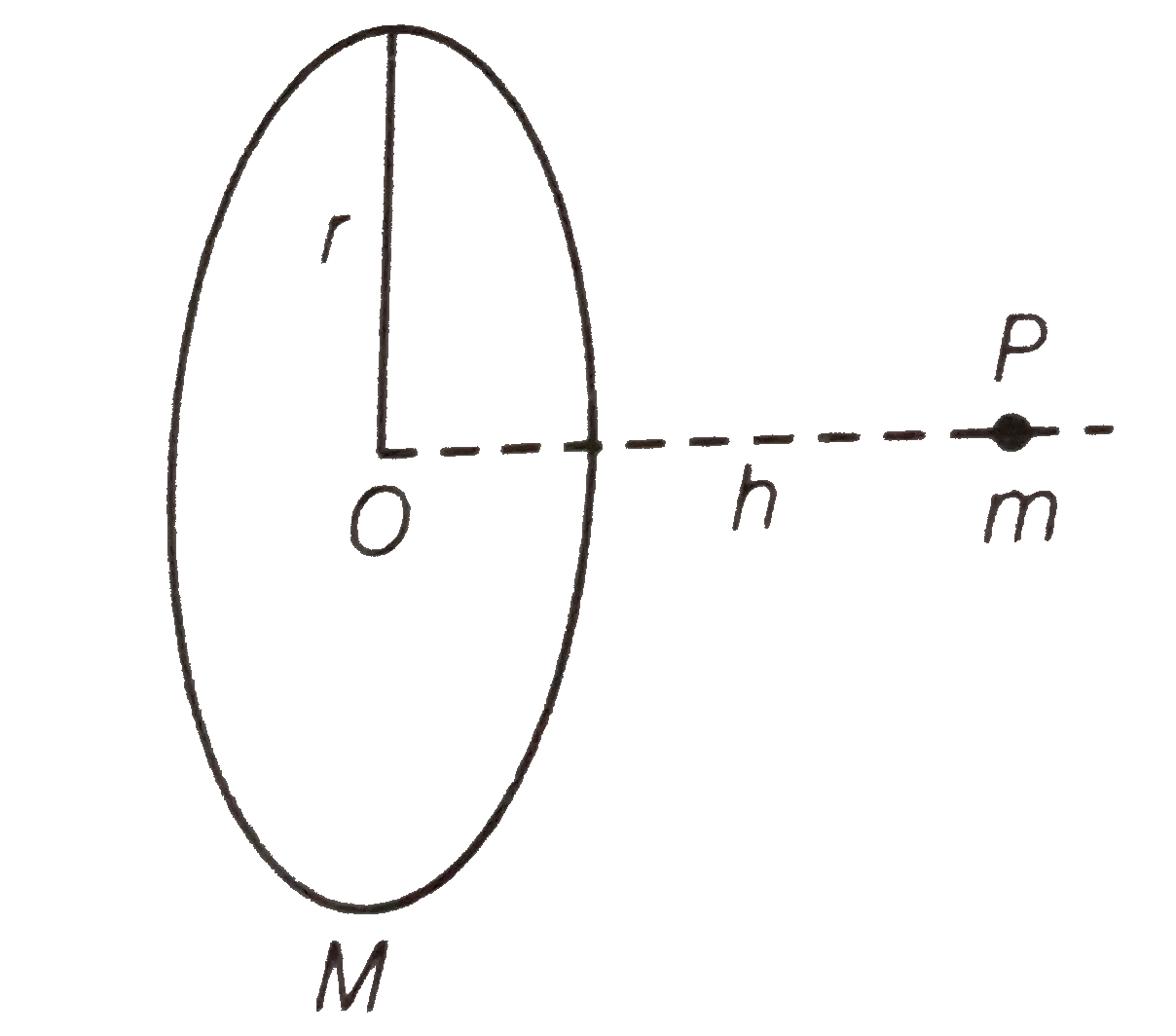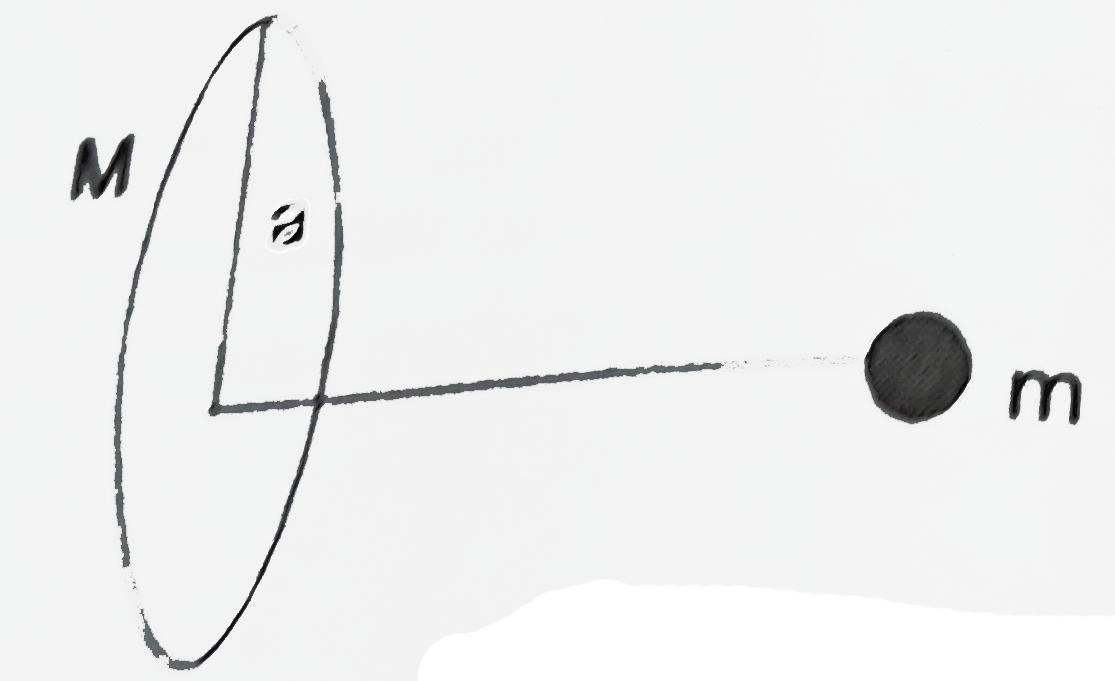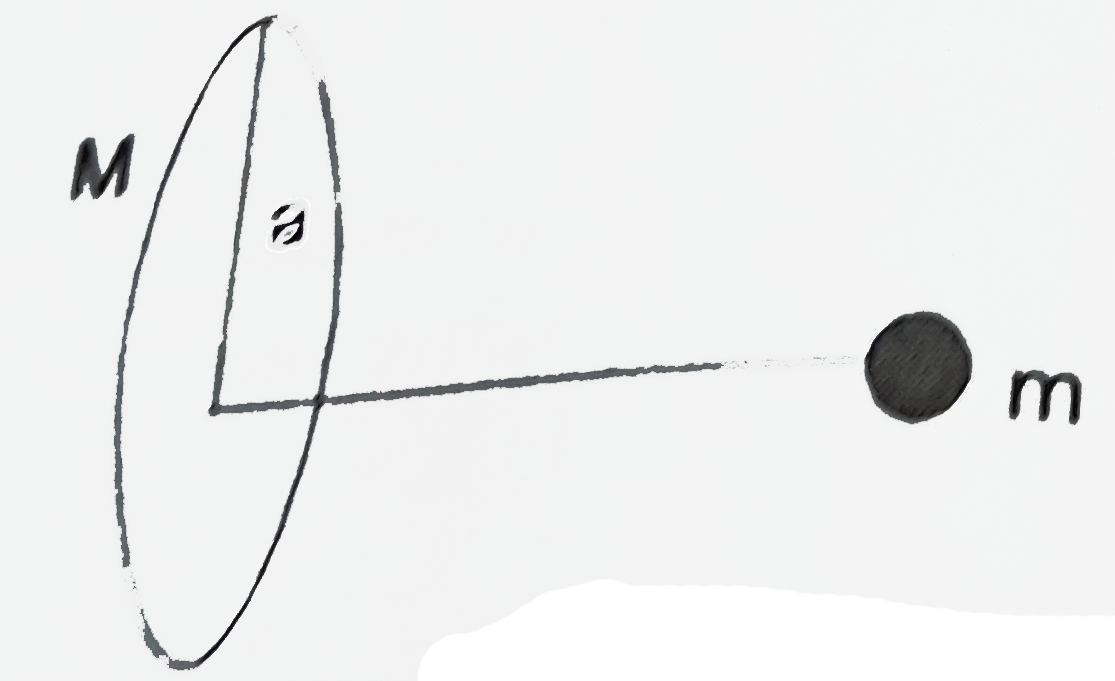A mass m is placed at P a distance h along the normal through the centre O of a thin circular ring of mass M and radius r Fig.
If the mass is removed futher away such that OP becomes 2h, by what factor the force of gravitational will decrease, if h=r ?

Consider the diagram, in which a system consisting of a ring and a point mass is shown

Gravitational force acting on an object of mass m, placed at point P at a distance h along the normal through the centre of a circular ring of mass M and radius r is given by
F=GMmh(r2+h2)3/2(along PO)....(i)
When mass is displaced upto distance 2h, then
F'=GMm×2h[r2+(2h)2]3/2 [∴h=2r]
When h=r, then from Eq. (i)
F=GMm×r(r2+r2)3/2⇒F=GMm2√2r2
and F'2GMmr(r2+4r2)3/2=2GMm5√5r2 [From Eq. (ii) substituting h=r]
∴F'F=4√25√5
⇒F'=4√25√5F
Topper's Solved these Questions
- GRAVITATIONBOOK - NCERT EXEMPLARCHAPTER - GRAVITATIONEXERCISE - Long Answer type question
5 Videos
- GRAVITATIONBOOK - NCERT EXEMPLARCHAPTER - GRAVITATIONEXERCISE - Very short Answer type question
11 Videos
- KINETIC THEORYBOOK - NCERT EXEMPLARCHAPTER - KINETIC THEORYEXERCISE - Multiple Choice Questions (MCQs)
31 Videos
Similar Questions
Knowledge Check
The escape velocity form the centre of a unifrom ring of mass M and radius R is :
A√2GMRB√GMRC√GM2RD√GMRFor a uniform ring of mass M and radius R at its centre
Afield and potential both are zeroBfield is zero but potential is GMRCfield is zero but potential is −GM/RDmagnitude of field is GMR2 and potential −GMRA point mass m0 is placed at distance R/3 from the centre of spherical shell of mass m and radius R. the gravitational force on the point mass m0 is
A4Gmm0R2BzeroC9Gmm0R2DNone of these
Calculate gravitational field intensity at a distance x on the axis from centre of a uniform disc of mass M and radius R .
View SolutionThe M.I. of a thin ring of mass M and radius R about an axis through the diameter in its plane will be:
View SolutionA particle of mass m is ocated at a distance r from the centre of shell of mass M and radius R. The force between the shell and mass F(r). The plot of F(r) ve r is :
View SolutionA particle of mass m is placed at a distance x from the centre of ring along the line through the centre of the ring and perpendicular to its plane.

if x<<a, the particle of mass m will:
View SolutionA particle of mass m is placed at a distance x from the centre of ring along the line through the centre of the ring and perpendicular to its plane.

Gravitational potential energy of this system.
View Solution
